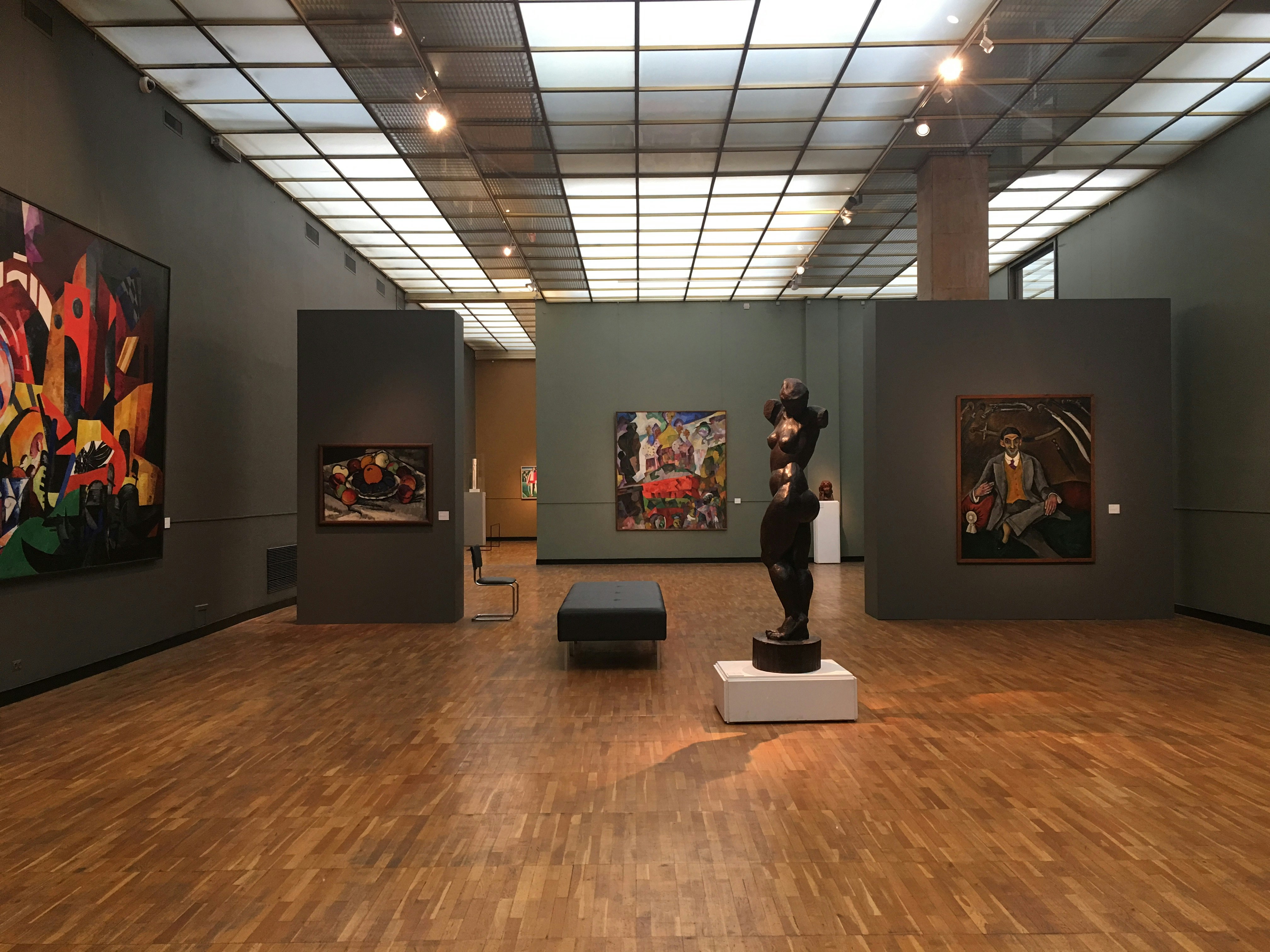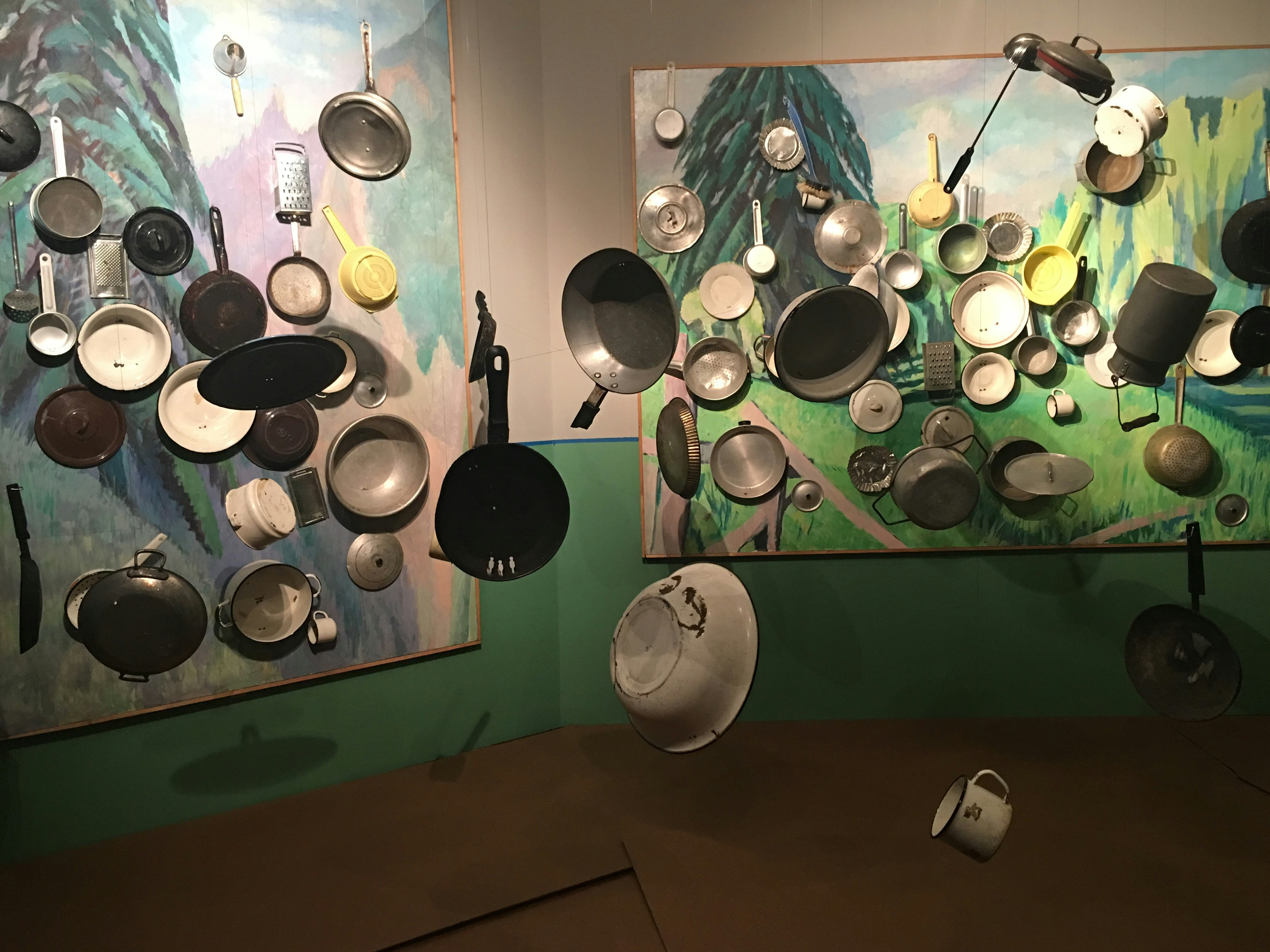A higher reality: notes from a short liaison with Russian art
Susan Acret
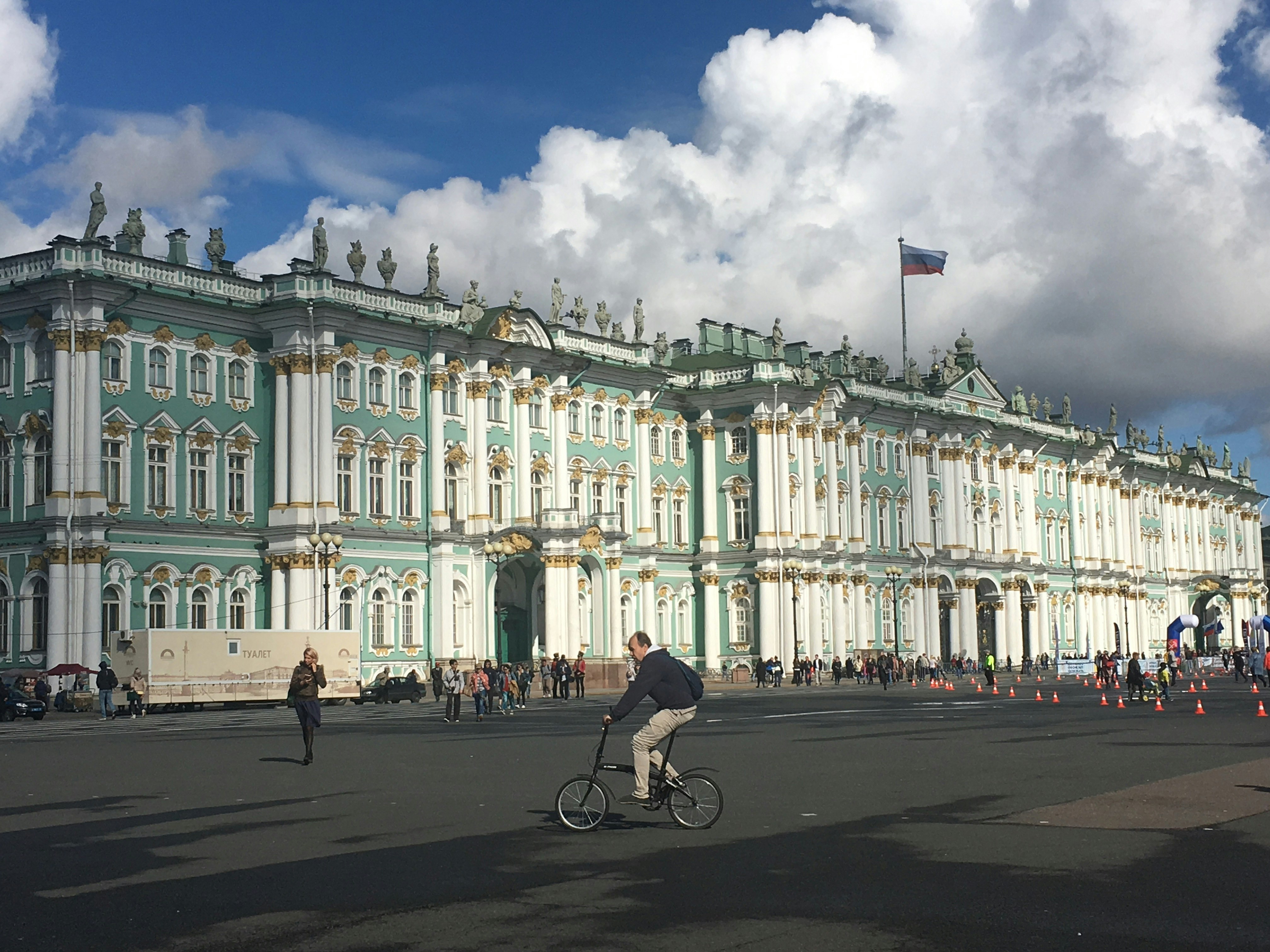
State Hermitage Museum, St Petersburg, September 2018; photo: Susan Acret.
A four-day itinerary in September 2018 through one-hundred or so years of Russian art, courtesy of Hong Kong research centre Asia Art Archive, is an excellent starting point to reflect on how little I know about Russia and Russian art. Our trip is a journey through the realms of the academy and the dissident; the sanctioned and the forbidden; the communal and the individual, traversing the centuries with visits across St Petersburg and Moscow to state and national museums, commercial galleries, artist studios, a contemporary private collection, an art school and a contemporary art museum. The four days afford a glimpse into art’s powerful role as social, cultural and political messenger as it refracts the experiences and realities of the society in which it is produced and continues to reverberate into the future.
Looking at recent Russian history from any perspective, ground zero is the Russian Revolution of 1917 and the subsequent assassination of Tsar Nicholas II and his family the following year. In St Petersburg’s impressive state gallery, the State Russian Museum, where over 100 paintings by Kazimir Malevich (1879–1935) are held, a window is offered into the upheaval of the times. In Malevich’s philosophy of Suprematism and undeniably seminal works such as Black Square (1915) (one of four versions is held at St Petersburg’s State Hermitage Museum) and Suprematist Composition: White on White (1918) (Collection MoMA, New York) we find the art version of the Russian Revolution, with Black Square cited as the ‘Zero point of painting’—a paraphrasing of Malevich’s own words about the painting. The Revolution called time on the immense wealth and privilege of a few and great poverty and dispossession of the many, and Malevich’s abstraction and use of geometric shapes asked the viewer to refresh their ideas about the way art perceived reality. Malevich’s works offered its new audiences a different language and a new way into art; one that didn’t rely on traditions about vanishing points, perspective and the human form.
The state galleries of St Petersburg and Moscow are filled with outstanding works by big names such as Malevich and Kandinsky, but they also house many works by internationally lesser-known Russian painters and sculptors of the late-nineteenth century and early twentieth century, including Mikhail Vrubel (1856–1910), Valentin Serov (1865–1911), Pavel Filonov (1883–1941) and Kuzma Petrov-Vodkin (1878–1939). Filonov was an ‘anti-Cubist’ painter who rejected the Cubist philosophy that advocated the surface deconstruction of objects. A friend and contemporary of Malevich’s, his analytical realist or ‘Universal Flowering’ philosophy sought instead to reveal the inner soul of objects. His paintings are kaleidoscopes of stained-glass colour shards that seem to burrow down into the psyche, opening their subject up to further investigation. Filonov fell in and out of favour depending on who was in the Kremlin, starving to death during the Siege of Leningrad. To the end, he refused to sell his paintings to individual patrons; his wish being to gift them to the Russian Museum. Filonov’s path mirrors that of many avant-garde artists who championed the Russian Revolution, only to fall foul of Stalin and find themselves once again on the outer. It is a pattern that can be seen throughout the twentieth century in Russia as artists, like many other individuals and groups, were by turns isolated and discriminated against before being rehabilitated and championed.
The bloodline of unofficial art continues through the twentieth century until the advent of Perestroika from the mid-1980s offers artists their first real taste of freedom. A visit to the St Petersburg studio of influential artist, theorist, lecturer, musician and theatre director Timur Novikov (1958–2002) is an introduction to one of the most well-known unofficial artists from this period. Novikov was active from the 1970s until his death and participated fully in the creative realm, starting art groups and movements and rock bands (even inventing new musical instruments), and producing paintings, work on textiles and sculptures. In the underground world of non-conformist art, its practitioners filled all the necessary roles—artist, teacher, gallerist—creating a world that for all its limitations makes today’s art scene seem staid.
'In any culture, art is a special reality, but in the Soviet Union, art was doubly real precisely because it had no relation to reality. It was a higher reality … ’
In Moscow, we are lucky to see the stand-out retrospective of work by Ilya and Emilia Kabakov, Not Everyone will be Taken into the Future, a Tate Modern-initiated exhibition that has toured to the State Hermitage Museum, St Petersburg, and during our visit is showing at the New Tretyakov Gallery, Moscow. While the didactic art language of Socialist Realism promoted during Stalin’s rule is overturned with his death in 1953, Russia continued to remain a challenging environment for artists. In 1959 Kabakov joined the Union of Soviet Artists, allowing him work officially as a children’s book illustrator while also pursuing his personal, non-official brand of art (also known as apartment art after its most common presentation venue), which explored the individual and the imaginative. As Russian curator, author and museum director Joseph Bakstein has observed, ‘The duality of life in which the official perception of everyday reality is independent of the reality of the imagination leads to a situation where art plays a special role in society. In any culture, art is a special reality, but in the Soviet Union, art was doubly real precisely because it had no relation to reality. It was a higher reality … ’ (1).
The Kabokovs’ move to New York in 1987 provided new freedoms manifested in the production of large-scale installations, a collaborative practice between husband and wife. These installations are Kafka-esque journeys into daily life under the Soviet state, where people lived a communal existence with shared cooking and bathroom facilities, and neighbours often reported each other’s indiscretions. In Incident in the Corridor Near the Kitchen (1989) time is put on hold as saucepans float dreamily across two paintings of mountain forest scenes, perhaps in re-creation of an argument but also as a wish to escape petty urban domesticity for the countryside. In other installations such as The Man Who Flew into Space from His Apartment (1985) an escape hole has opened in the ceiling via a homemade catapult which we presume has sent its occupant sailing into space, while the eponymous Not Everyone Will Be Taken into the Future (2001) sees the rear carriage of a train leaving the station, with discarded, damaged paintings left behind, trampled on the tracks. The Kabokovs’ invocation of physical departure in these works is a manifestation of their psychological longing to escape a dreary, grey existence for an ‘other’ that could be nature, space, or the future.
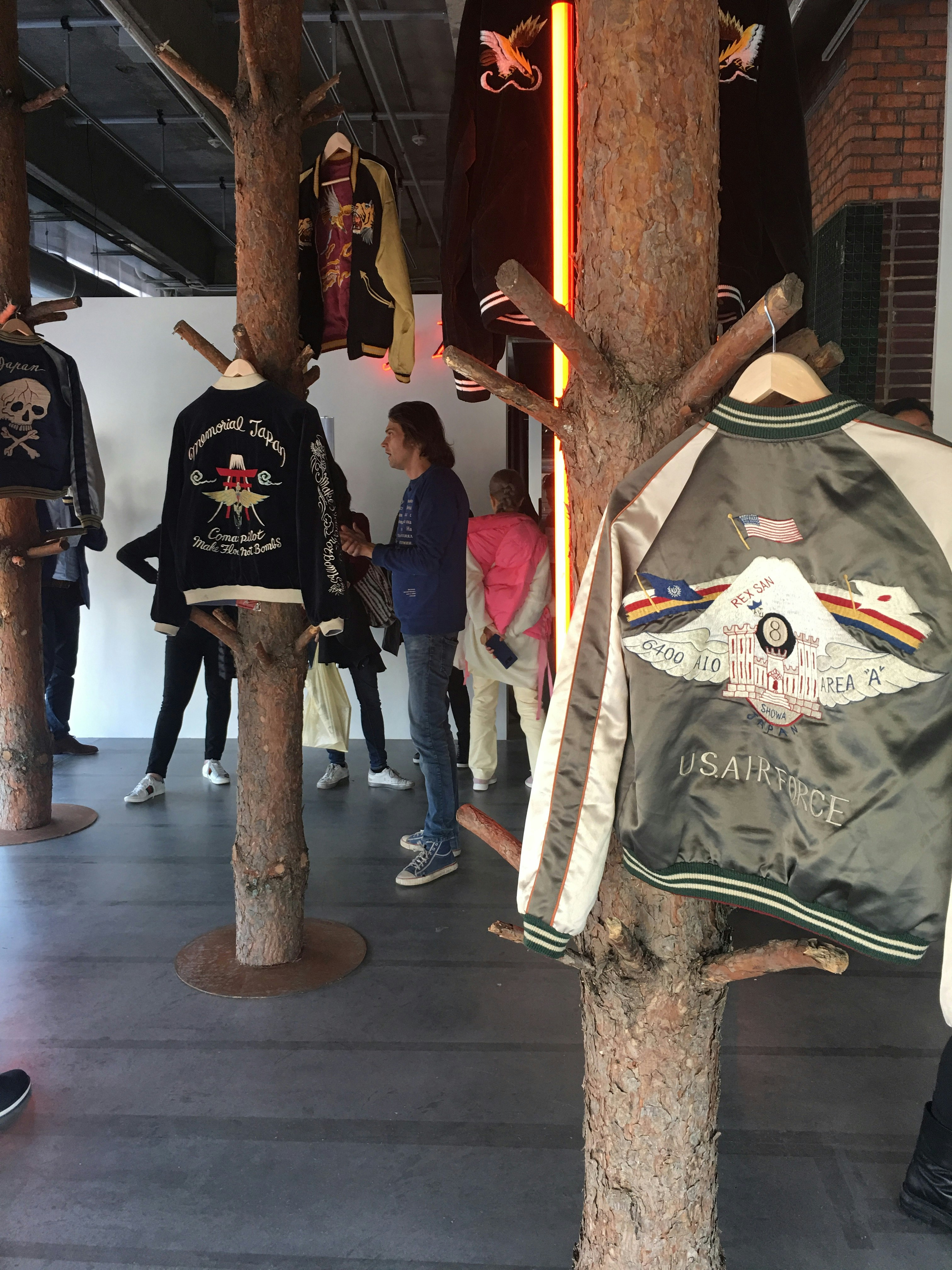
The Fabric of Felicity (installation view), Garage Museum of Contemporary Art, Moscow, September 2018; photo: Susan Acret.
To stroll from the New Tretyakov across the famed Gorky Park is to span 50 years to 2018 and the internationally-styled Garage Museum of Contemporary Art. We encounter The Fabric of Felicity, an exhibition of works by Russian and international artists that use the metaphor of the garment and textile industries to express ideas around Russian social and cultural issues. As the country’s flagship contemporary art institution, founded by Dasha Zhukova and Roman Abramovich in 2008, the Garage also features a library, an archive and a bespoke children’s playground.
We remain in the present with several artist studio visits. AES+F share their work in progress, set designs for a production of Puccini’s Turandot that has since taken place in Palermo in January 2019, and is being showcased in Bologna in May. The group is well known internationally for their video work: theatrical, often violent and emotionless tableaux of futuristic landscapes and human interactions which fall short of storytelling, dwelling instead in the realm of the disjointed pornographic nightmare. Conversely, a visit to Alexandra Paperno’s workspace reveals handmade, meditative installations and drawings; evocative engagements with themes as diverse as constellations and outer space, politics and nationalism, all which explore the uncertain area between the public and the private.
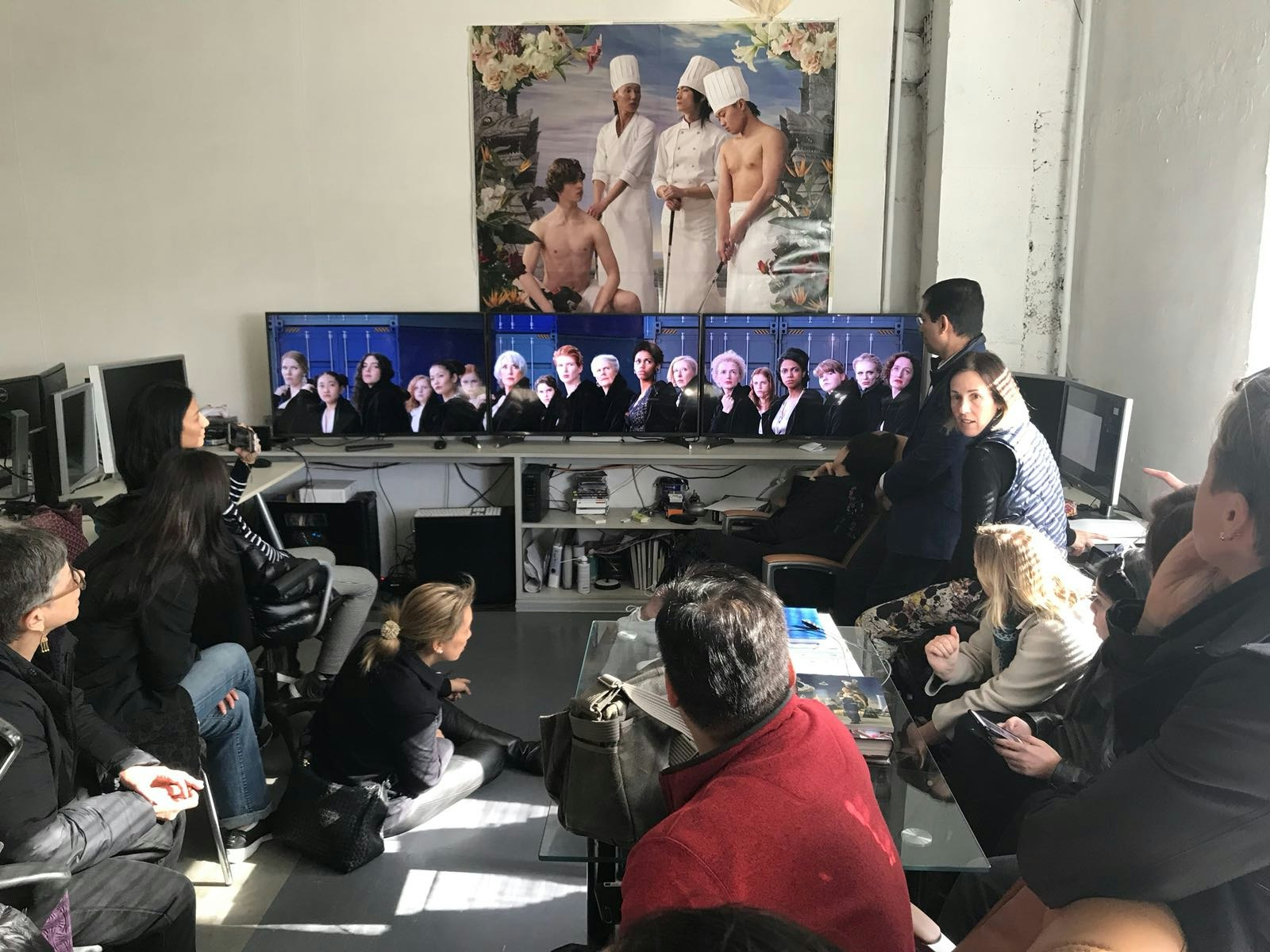
AES+F studio visit, Moscow, September 2018; photo: Susan Acret.
Despite a fairly stable social and political landscape (albeit not a democratic one), Russia remains a difficult environment for artists. One senses that those who have chosen to stay, and those who have returned, such as Alexandra Paperno (after studying and practicing for a number of years in New York), have done so because they feel a need to contribute to their own arts ecology and perhaps also because these ties provide creative impetus for their work. The same ties also bind them to their country’s tumultuous, difficult history of the last 100 years.
Continuing our tour in Moscow at the Lenin Library, which houses 43 million items and is the second largest library in the world, we hear from artist Sergey Kishchenko on his project Observation Journal (2015–2016), a collaboration with RESANITA (Austrian artists Anita Fuchs and Resa Pernthaller), and contemporary art that again takes history as its stage. The work looks at the life and work of agronomist Nikolai Vavilov (1887–1943). Vavilov grew up in a poor family often affected by crop failures that left them without enough to eat. As a scientist, he specialised in the study of disease resistance in oats, wheat and barley and travelled the world collecting seeds with the aim of creating hardier varieties of the grains. By 1924, his seed collection numbered 60,000 and formed a large part of the Leningrad seed bank. The now-familiar narrative sees Vavilov fall victim to one of Stalin’s purges and imprisoned for twenty years, before dying of starvation in prison in 1943 during the Siege of Leningrad. In 1941, the seed bank Vavilov helped create was whisked to safety by its scientists and protected over the duration of the siege. The scientists refused to eat its contents and by the end of the siege in 1944 nine had died of starvation. The Nazis subsequently captured the seed bank, planting seeds in the Eastern provinces of Russia as part of their genetics program. In one of a number of iterations, the artists re-enacted this seventy-year-old event, sowing seeds from the original grain stolen in 1944. Another exhibition saw the work staged in various rooms throughout the Lenin Library.
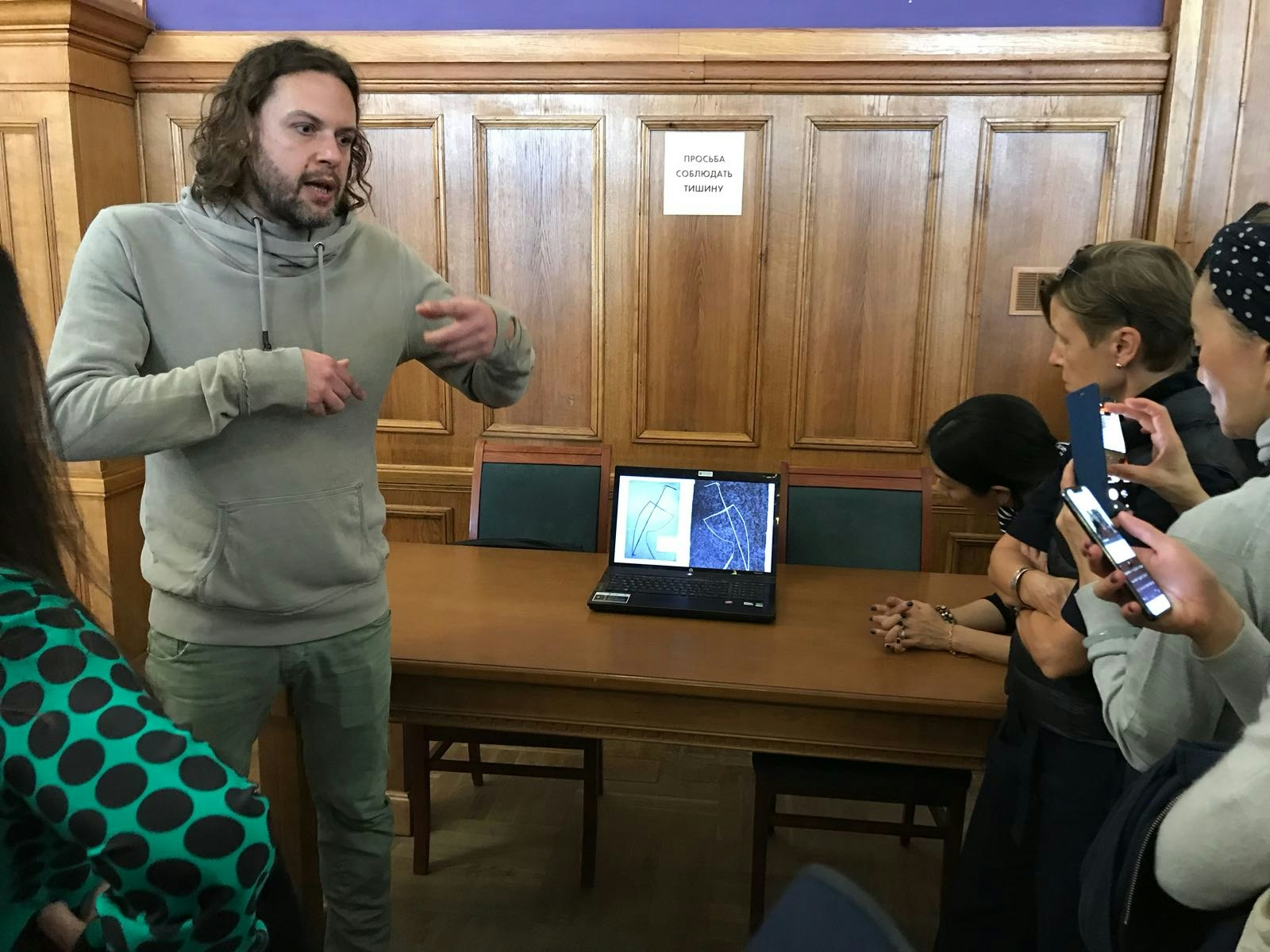
Sergey Kishchenko discussing his work, Lenin Library, Moscow, September 2018; photo: Susan Acret.
Back in St Petersburg, the sun shines squarely on a Rembrandt at the Hermitage, showing up the aged and crackled glaze of its surface, while a mild autumn breeze wafts through open windows. With 66,842 square metres of exhibition space, there is no money for comprehensive climate control. The tour groups that swarm in their thousands through their guides’ top ten hits make the museum a challenging environment in which to view art. We move away from the crowds and look at a fraction of some three million other treasures held in the collection, including murals, sculptures and pottery from the World Heritage listed Mogao caves of Dunhuang, China; porcelain, inlaid silver and gold objects from Persia; and a room with fifteen Picassos—for some reason empty of viewers, such is the scope of the Hermitage’s offerings. Many of the works held by the Hermitage have never travelled. One reason to visit Russia, but certainly not the only.
Notes
(1) Joseph Bakshtein, Joseph, ‘A View from Moscow’ in Nonconformist Art: The Soviet Experience 1956-1986, eds. Alla Rosenfeld & Norton T. Dodge (London: Thames & Hudson, London, 1995) 332.
About the contributor
Susan Acret is an editor and writer who has worked in the field of contemporary visual art for over 20 years, with particular expertise in contemporary Asian art.
